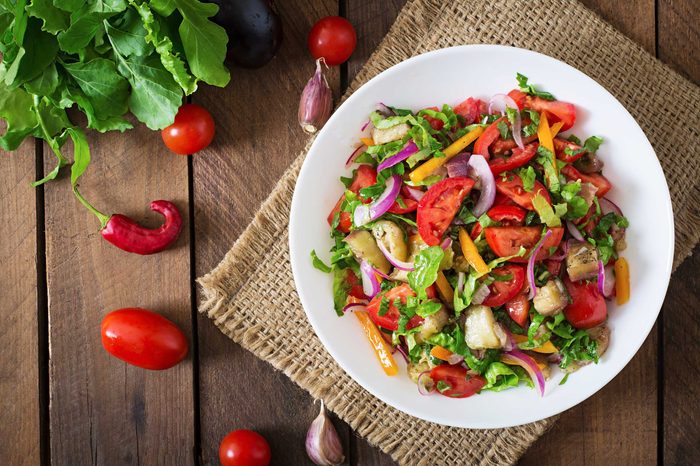
What may help acne: Antioxidant-rich fruits and vegetables
“When you’re healthier, your skin reflects that,” says Rebecca Kazin, MD, an assistant professor in the Johns Hopkins department of dermatology and the associate director at the Washington Institute of Dermatologic Laser Surgery, in Washington DC. Antioxidants—found in spades in brightly colored produce—neutralize free radicals, which can wreak havoc on your skin by increasing inflammation. And inflammation is not only related to premature aging (think fine lines and wrinkles) but also acne.
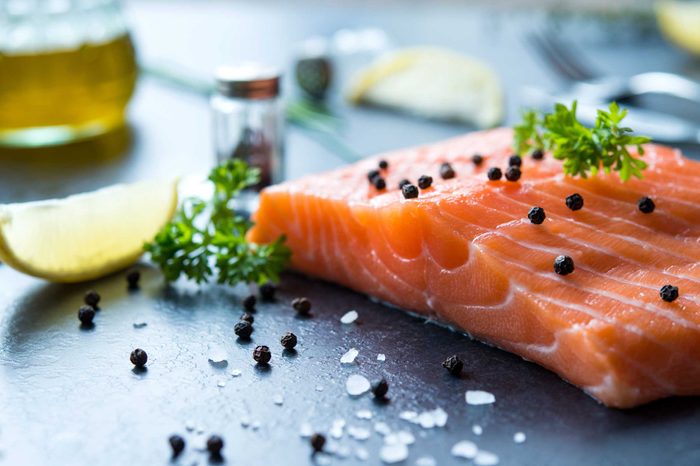
What may help acne: Fatty fish
Salmon, sardines, and tuna are all good choices that help your body get the anti-inflammatory omega 3s it needs. “These healthy fatty acids are the building blocks for our cells,” says Dr. Kazin. By allowing your skin to build new, healthy cells, it will look better.” In one small study in 2014, taking omega 3 supplements helped significantly decrease acne breakouts. If you’ve also got acne breakouts on your back, these other habits can help clear them.
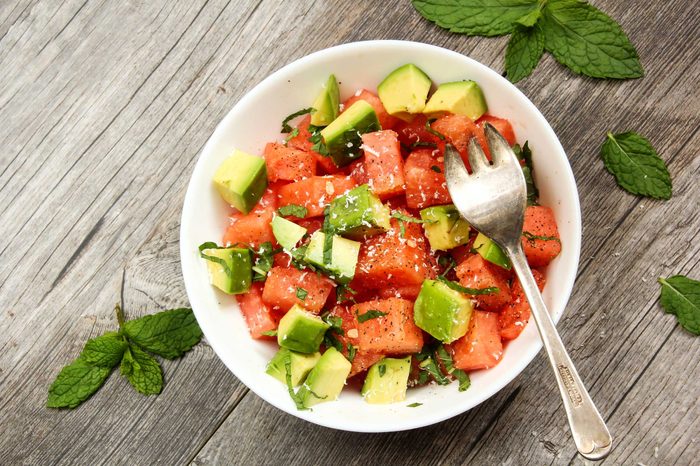
What may help acne: Cucumbers and watermelon
Any high-water food will boost your body’s hydration, and that’s a very good thing for your skin. “Maintaining skin’s hydration level is helpful for any skin condition,” says Dr. Kazin. “Patients often dry out their skin in an effort to treat acne, then pile on rich moisturizers, which exacerbate acne,” she explains. It’s best if your skin doesn’t swing from one end of the spectrum to the other—and staying hydrated by chugging H20 and filling your diet with water-rich eats can maintain your complexion’s homeostasis.
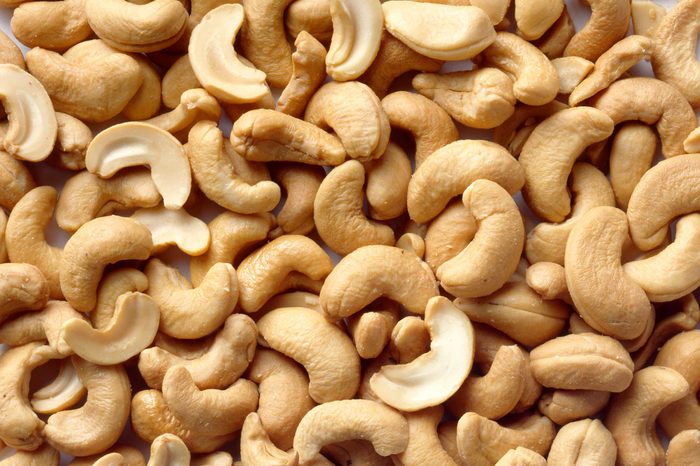
What may help acne: Cashews
Getting a little nutty for your skin pays off. A 1-ounce (oz) serving of cashews supplies a good source of zinc. In a 2014 study in BioMed Research International, researchers found that lower blood levels of zinc were associated with more severe acne, possibly because zinc may have anti-inflammatory and immune-boosting properties. Other stellar zinc sources include oysters, lobster, and beef.
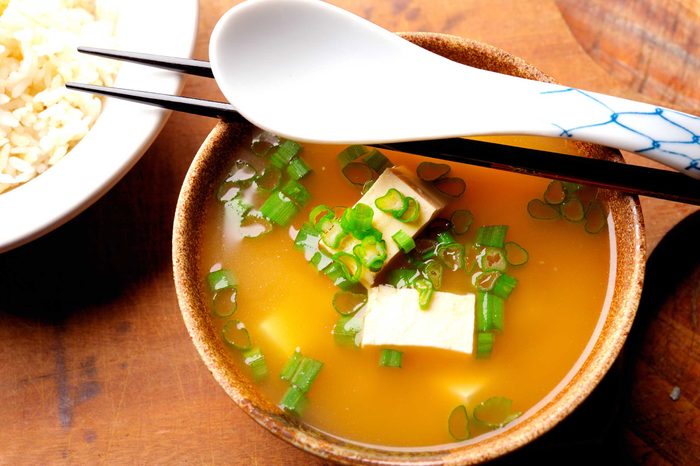
What may help acne: Probiotic-rich foods
Yogurt is famous for its probiotics, but sauerkraut, miso, kimchi, and tempeh are all good non-dairy sources of the beneficial bacteria. A 2014 review of research in the Journal of the American Academy of Dermatology shows that consuming probiotics may stymie the release of inflammatory proteins and decrease sebum production, preventing plugged pores.
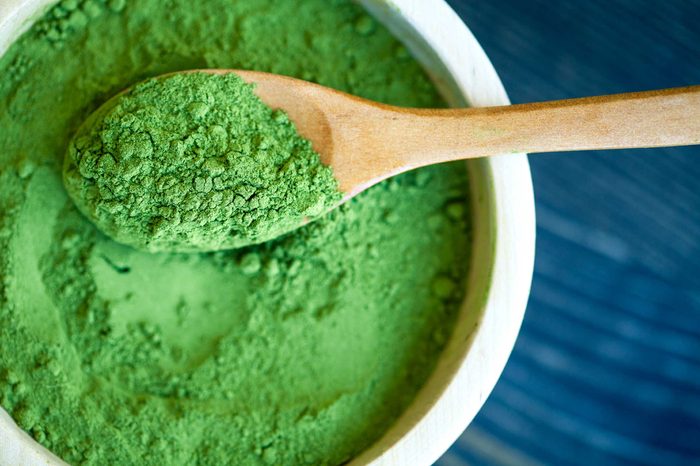
What may help acne: Spirulina
It’s blue-green algae and it’s bursting with nutrients—and gamma-linolenic acid. GLA is an essential fatty acid that has anti-inflammatory properties, which is why it may give blemishes the boot. In a 2014 study, acne sufferers who supplemented with either omega 3 fatty acids or GLA for 10 weeks saw fewer acne lesions. You can buy spirulina at health food stores and add it to your morning smoothie. Don’t miss the ways spirulina benefits more than just your skin.
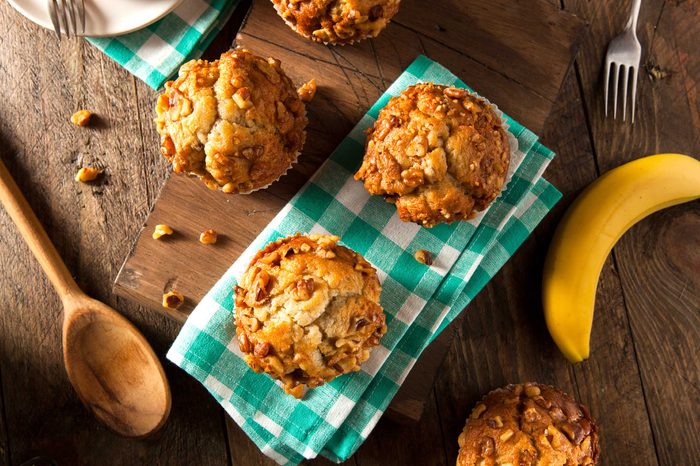
What may contribute to acne: Refined carbohydrates
You’ll find these hanging around in foods like snack mixes, cookies, cakes, crackers, muffins, and white bread. These are highly processed eats that contain refined carbs, including added sugar. A 2016 study published in the Journal of the American Academy of Dermatology found a correlation between high glycemic index diets and increased incidence of acne. The thought is that these foods cause a spike in your blood sugar, thus increasing your insulin levels and leading to a breakout, says Dr. Kazin.
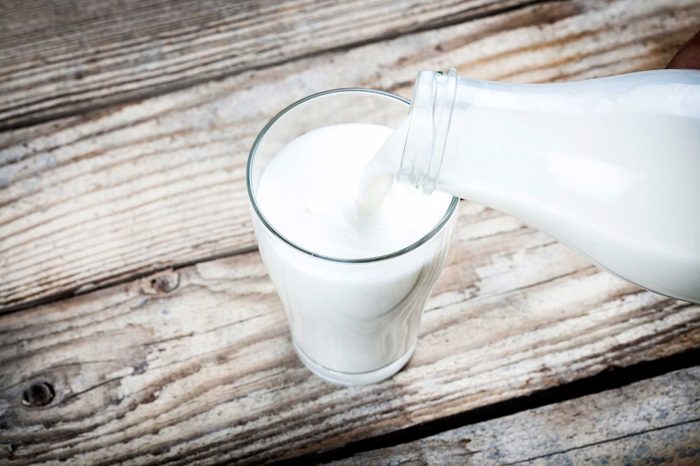
What may contribute to acne: Milk
If you have acne, you may want to rethink your glass of cow’s milk. It’s far from definitive, but some studies have suggested that acne may be worse for dairy eaters, particularly milk drinkers. It may be that dairy can cause a spike in testosterone that causes downstream effects leading to a breakout, explains Dr. Kazin. “It’s important to remember that this is all individual. Plenty of people can cut things out of their diet and their acne would not change,” she adds.
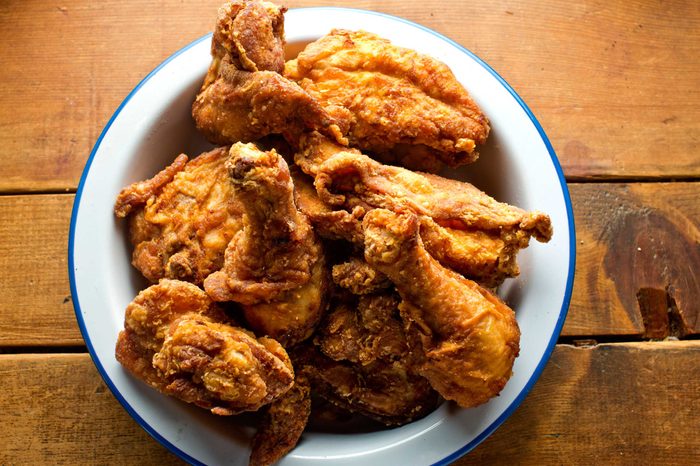
What may contribute to acne: Saturated fat
Burgers, fried chicken, and fast food meals are out if you want clear skin. That’s because they’re higher in saturated fat. A 2014 study in the Journal of the Academy of Nutrition and Dietetics looked at a range of diet habits and acne and found that people who had moderate to severe acne consumed more saturated fat than those with clear skin or mild acne. It’s not well understood, but saturated fat may increase certain growth factors that contribute to breakouts.
